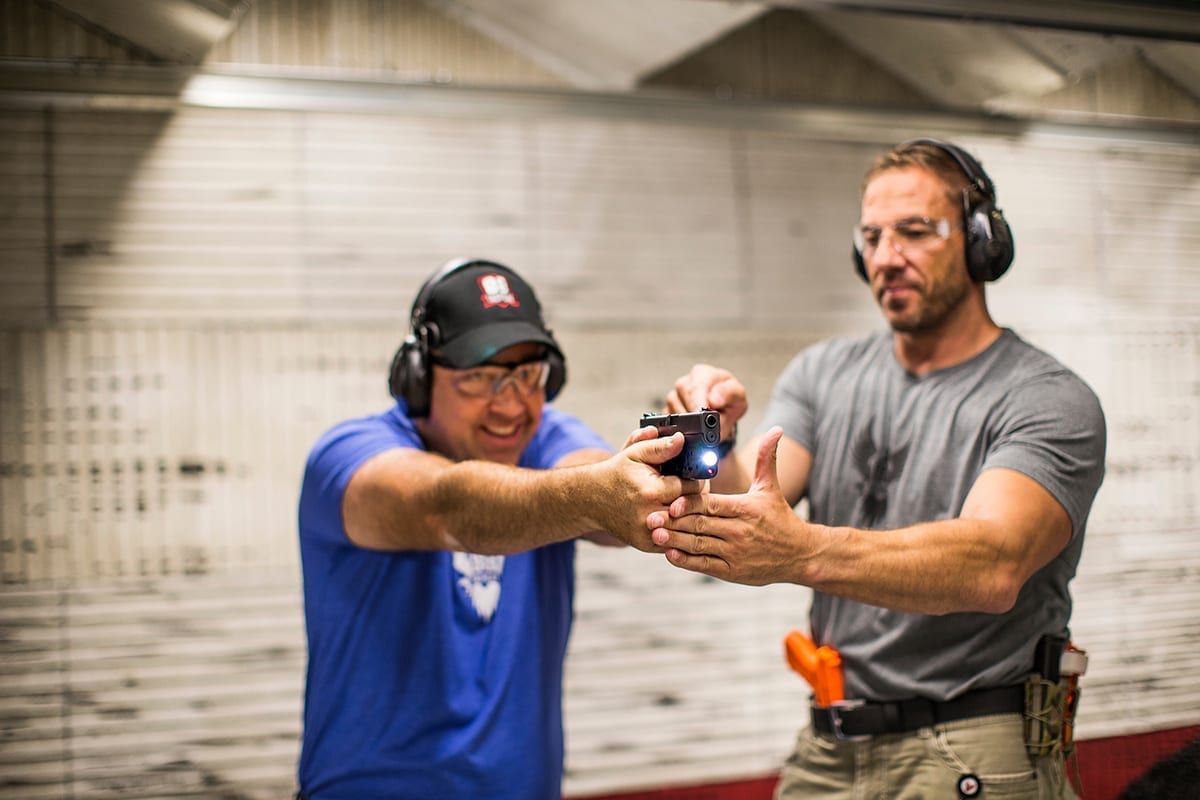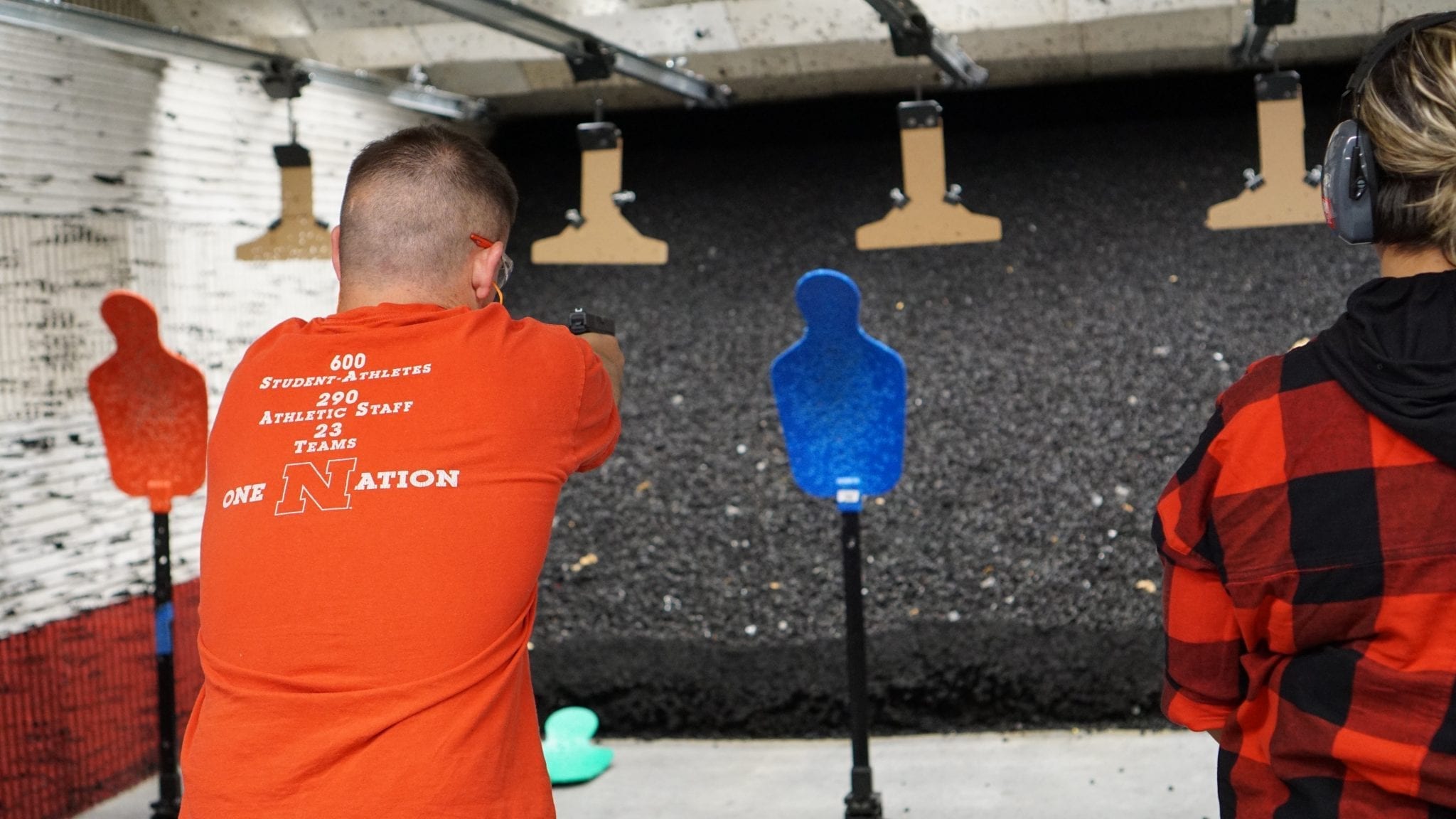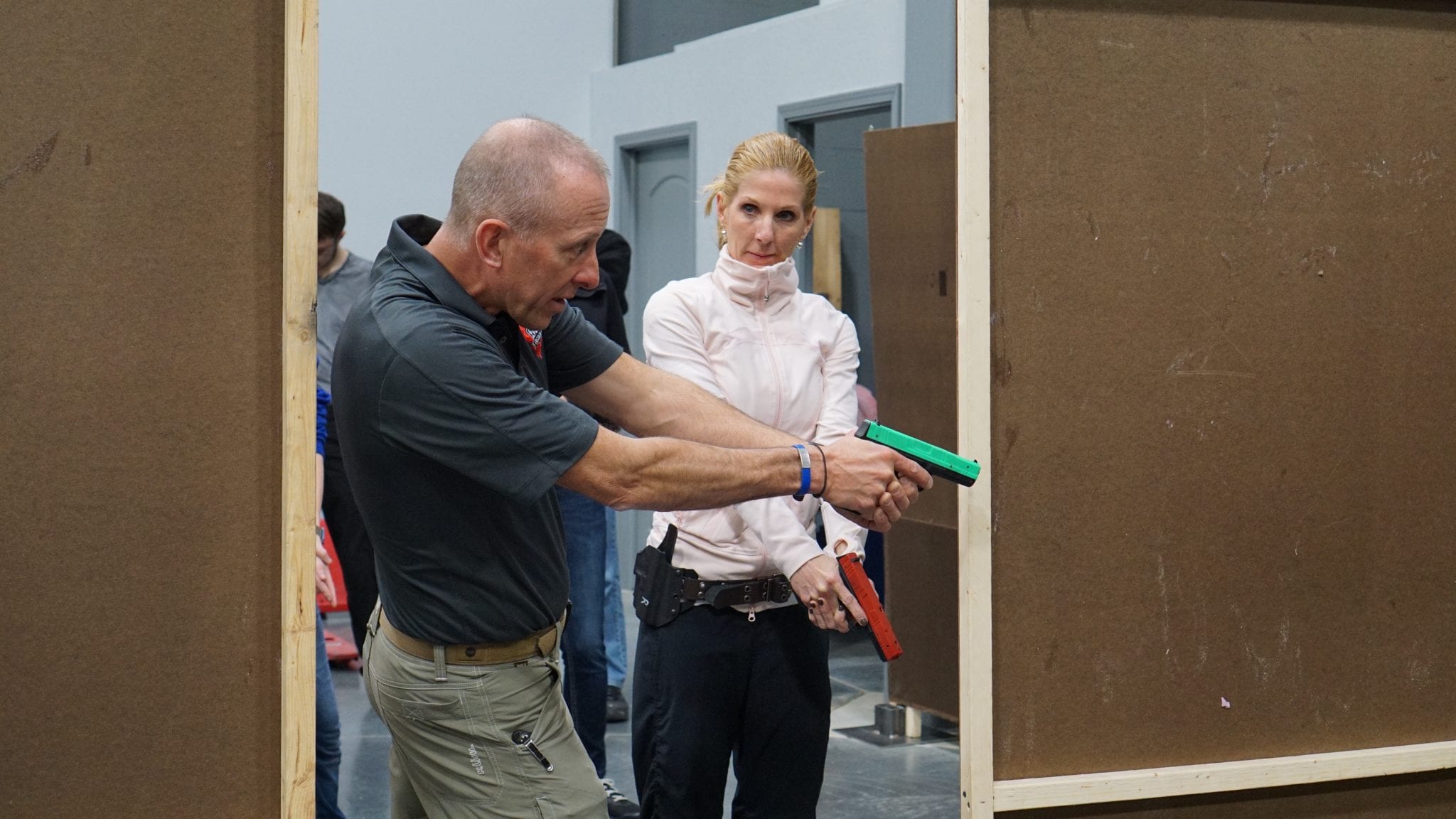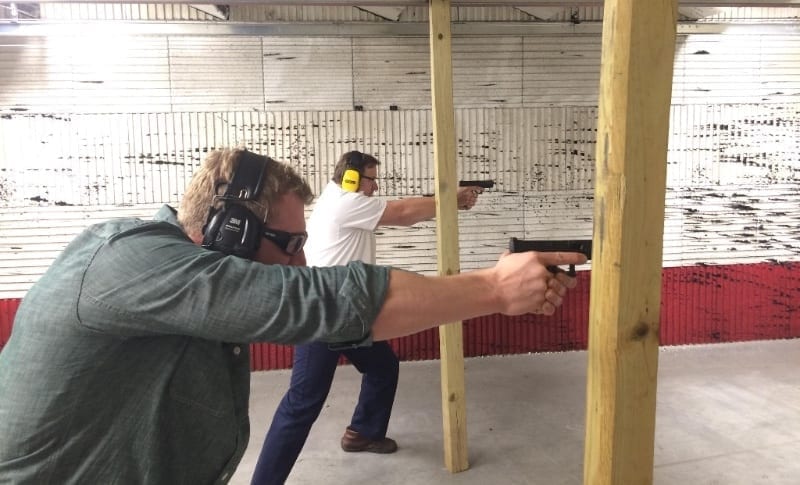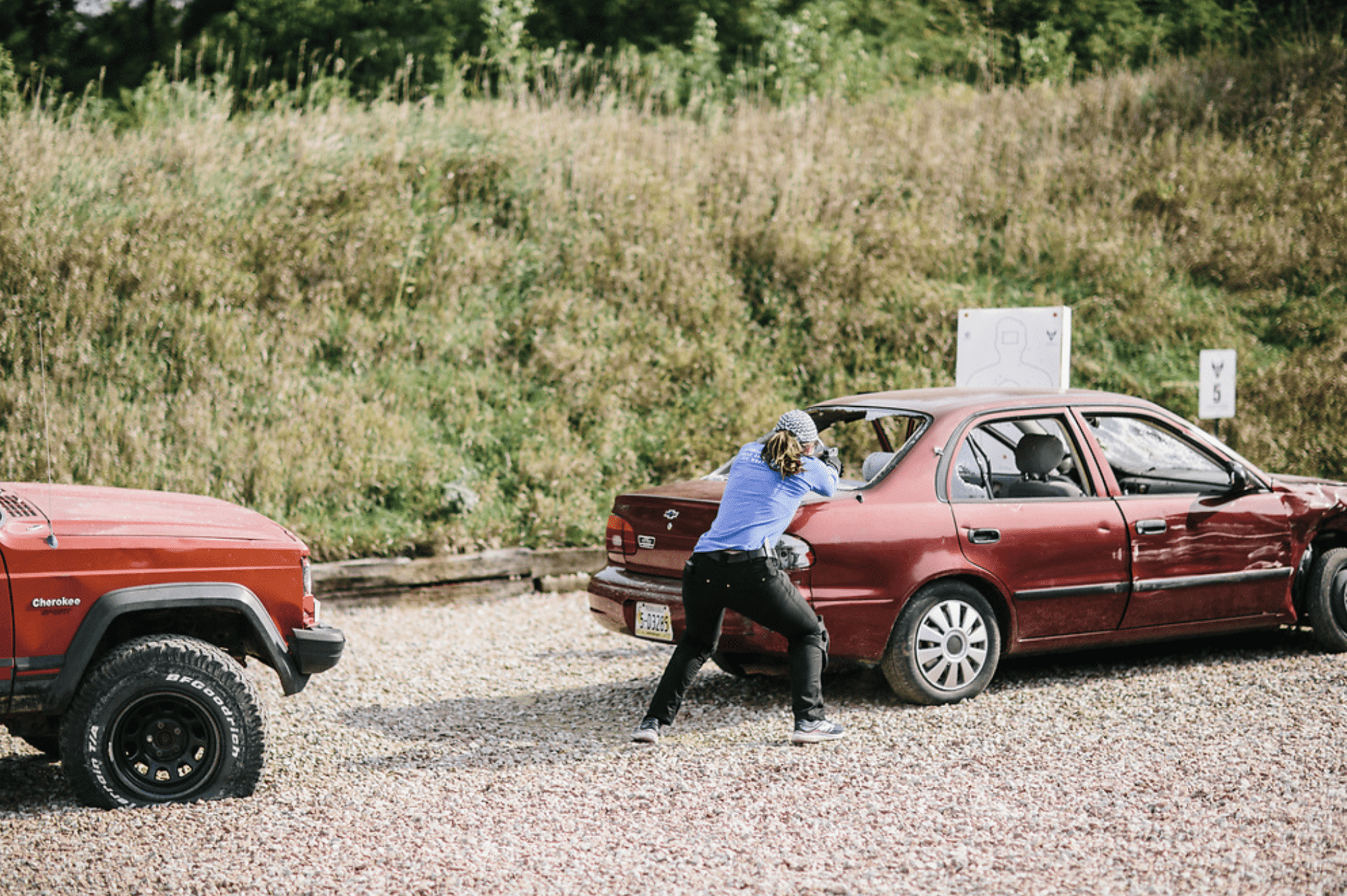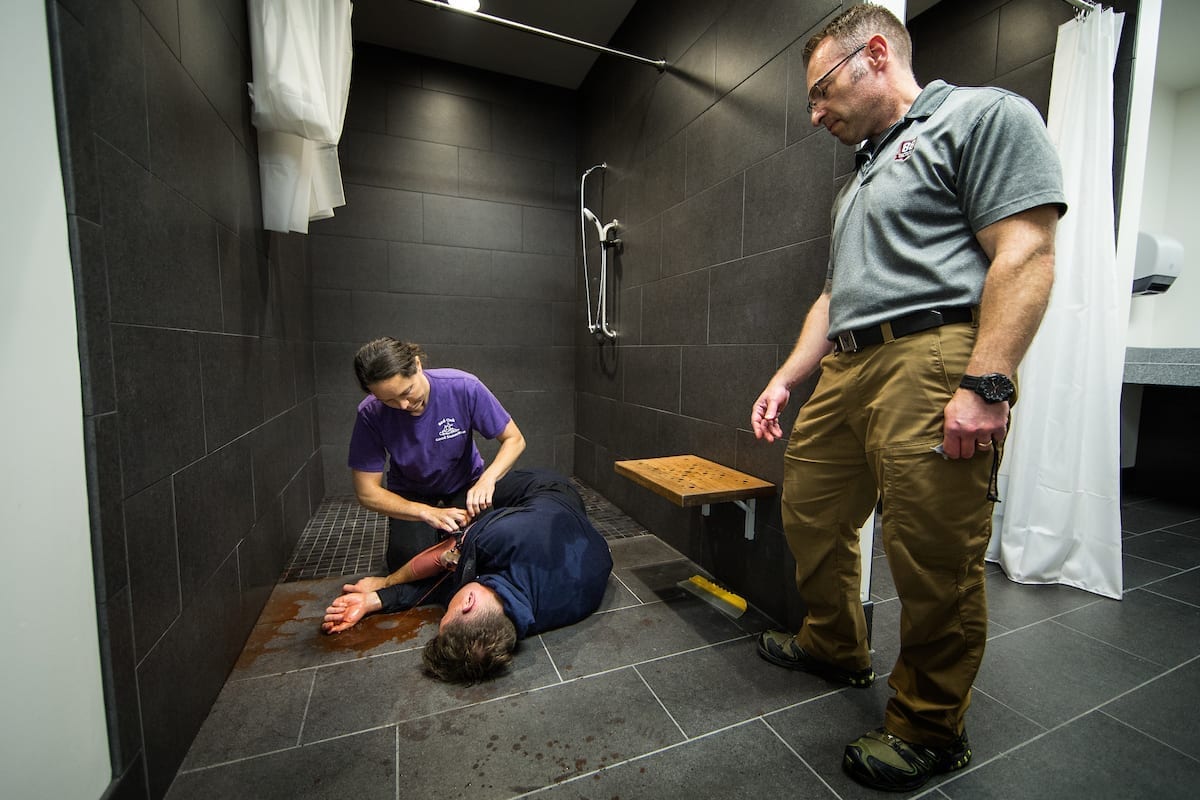By: Trevor Thrasher, Senior Instructor
Like many people, you finally have your Concealed Handgun Permit and realize the training you received was mostly “check the box” and didn’t do a lot to prepare you in a practical sense for what you might encounter.
Knowledge is great, but it has to be reinforced and implemented in realistic conditions. We tell our students, when compared to learning how to ride a bike, taking a basic permit class is like getting permission to ride a bike with training wheels on a flat parking lot surface with your parents watching. How do we get those training wheels off?
You Have Your Concealed Handgun Permit – Now What?
Basic Handgun Level 1 – Live Fire Training Course
The first class I suggest after concealed carry certification is our Basic Handgun Level 1 (Live Fire) class. This four-hour course is designed to reinforce what you learned in your Concealed Handgun Permit class. It puts you on a timer and starts to give you meaningful standards for time and accuracy. This is a basic class with heavy emphasis on doing everything correctly from the start. It prepares you for typical encounters where you might start with the advantage of having your gun in hand, in a ready position.
After a brief introduction covering the basic principles of safety, marksmanship, and self-defense shooting, you will work on dry fire practice for a segment, then move on to the range. During live fire, heavy focus will be on running your gun consistently in a very simple manner and making both fairly rapid point shooting hits at close range and more deliberate sighted shots at slightly extended range. The mechanics reinforced here will fill in any gaps from your permit class and allow you train on your own safely, correctly, and consistently from the start.
Basic Handgun Level 1 – Interactive Training Course
After the Defensive Handgun 1 Live Fire Course, I would suggest the Basic Handgun Level 1 Interactive Course (Previously Called Concealed Carry Next Steps). This four-hour, rapid-fire course includes a brief lecture on use of force to brush up on principles and local laws, then it moves on to a second segment practicing with SIRT (Shot Indicating Resetting Trigger) Handguns that use lasers to indicate hits. The SIRT pistols are used to work practical dry fire training for both point shooting and sighted fire, then are used interactively with other students acting as bad guys to condition you to use deterrence correctly, or the right defensive response when facing a certain threat.
During the third segment, we put your knowledge to the test using use of force videos projected on a screen with you facing whatever happens in front of you. This is a great way to put your knowledge, tactics, and skills to test with realistic decision making. After that, there is a short live-fire range session that reinforces the appropriate behavioral response to the threat presented using photo-realistic targets. All of this is done to train you realistically and practically. I have often said that marksmanship is typically only 20% of the gunfight. This course allows you to work on the other 80% – doing things that are very difficult on your own.
Basic Handgun Level 2 – Live Fire and Interactive Training Courses
For your next round of training, I would suggest Basic Handgun Level 2, Live fire and Interactive classes. These courses continue to add layers of skills and increasingly challenging demands at a very controlled methodical pace. You do not absolutely have to take the live fire course before the interactive, but we recommend you take them in that order. I would also suggest that you do not get more than one level ahead with your live fire before taking the interactive course. For example, I wouldn’t go past Level 2 Live Fire without taking the Level 1 Interactive Course. Taking the live fire courses alone may give you a false sense of preparedness. The Interactive Courses will provide you the necessary link to reality and additional live-fire training.
Skill Builder Practice Sessions
In between these courses, do not neglect your own range and dry fire practice. On top of our full-length training classes, we hold multiple weekly Skill Builder Sessions for both basic and intermediate level students. Adding a few of these classes will cement the basics under the watchful eye of a trained instructor. These courses are the next best thing to one-on-one private training. If you have the resources and want the best value for your training time, I would always consider adding private training to the mix. Nothing beats one-on-one coaching and developing a personal training plan and goals. If you’re interested in setting up private training sessions, contact our Training Manager, Kurt Sorys: ksorys@88tactical.com or 402-933-7171 ext. 102.
Specialized Classes – Home Defense, Active Killer Response & High Threat Vehicle Engagements
After getting past the two levels of both Live Fire and Interactive Handgun, I would start to look at our situation-based courses such as Home Defense, Active Killer Response, and High Threat Vehicle Courses. These are very educational courses that allow you to utilize the skills you now have in very specific environments. Our Primal Self-Defense Courses are also very popular for both those who have their concealed handgun permits and those who do not.
Intermediate Handgun Levels 3 & 4, TacMed and Edged Weapon Tactics
At this point, your basic education is complete, and after some practice on your own, you’ll be ready to move on to Intermediate Level training, including Handgun Levels 3 and 4. Consider adding some variety to your training with Tactical Medicine (TacMed), Edged Weapon Tactics and more to make yourself more well-rounded.
Train hard, fight easy. We have a clear, challenging and fun path ahead to help you build your:
- confidence
- fitness
- ability to defend yourself and your loved ones
What are you waiting for? Check out our course schedule or browse our website to find additional information on all of our training classes.
Stay Safe,
Trevor

